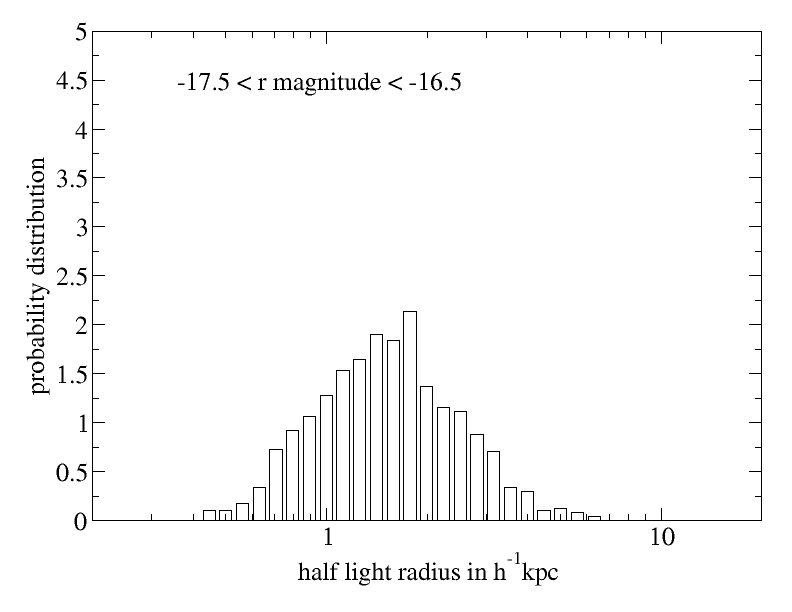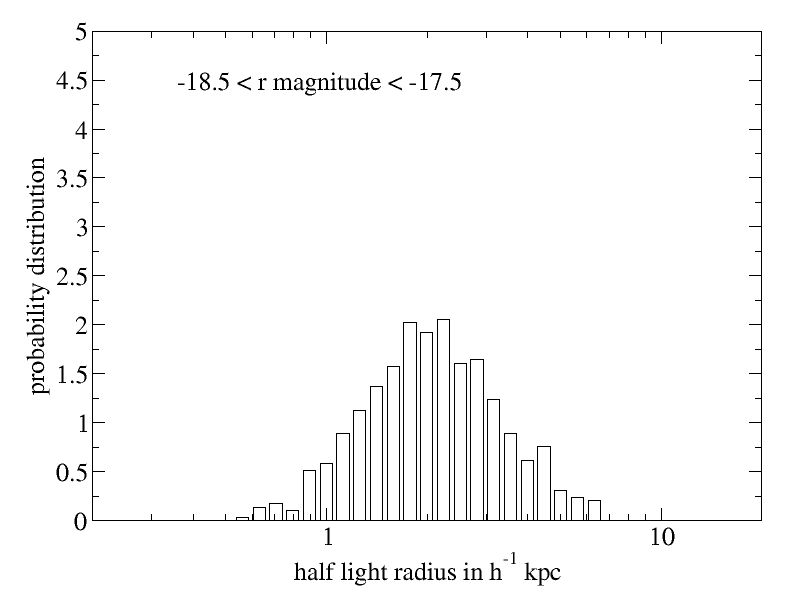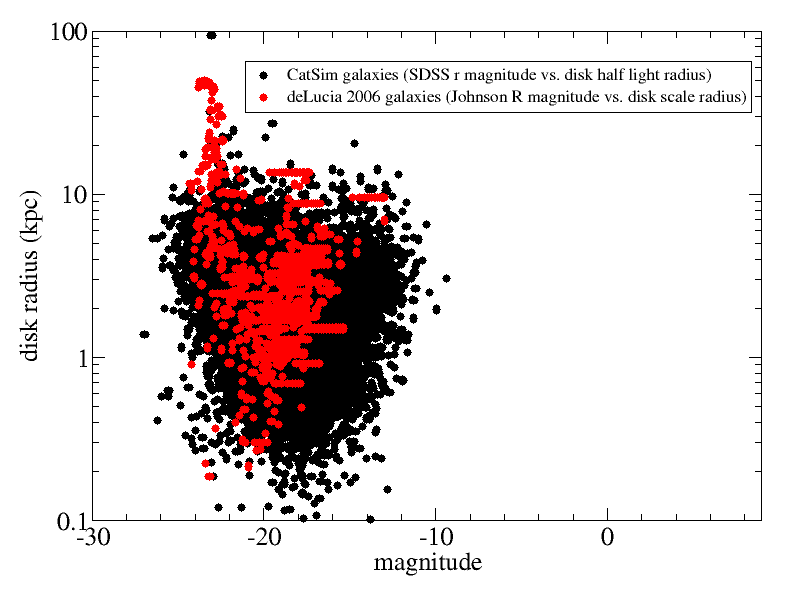
This page will attempt to clarify what, exactly, is meant by semi-major axis, semi-minor axis, and half light radius in the galaxy tables of the CatSim databases.
First: a simple query of galaxies from the database show that, for both bulges and disks, half light radius is set equal to semi-major axis.
The quantities assigned as half light radii appear to come from two sources. The half light radii of bulges appear to be assigned using the galaxy formation models of Baugh et al (2005; MNRAS, 356, 1191). To arrive at this conclusion, I queried 27,000 galaxies from our database and divided them into bins based on the absolute magnitude of the bulge. Consider the plots below, which show the distribution of "half light radii" (as defined the database) in each of these bins:





Comparing these distributions to the blue curves in the "early type" panels of Figure 15 from Gonzalez et al. (2009; MNRAS 397, 1254), we see distinct similarity. Given that the blue curves in that figure represent Petrosian half light radii drawn from the Baugh 2005 model, it seems reasonable to conclude that the half light radii assigned to galaxy bulges in our database come from the same model.
The half light radii assigned to galaxy disks appear to be drawn directly from the database of galaxies painted onto the millennium survey and hosted here:
http://gavo.mpa-garching.mpg.de/Millennium/Help?page=databases/millimil/delucia2006a
The figure below plots two populations of galaxies: the black points are the 27,000 galaxies drawn from our database. The red points are 1,000 galaxies drawn from the deLucia database mentioned above.

Both populations appear to occupy roughly the same region of parameter space. According to the documentation provided with the deLucia database, the disk radii in that database are assigned using the model of Mo, Mao, and White (1998; MNRAS 295, 319), which assigns disk radii based on the size and angular moment of the dark matter halo it inhabits (see their equations 12). Thus, the "half light radii" in our database correspond to a scale radius associated with the disk's surface density profile (see Mo, Mao, and White's equation 5).